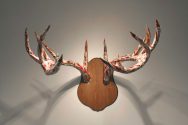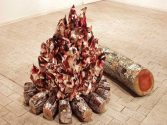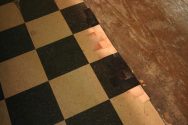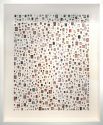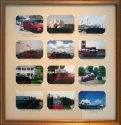Srdjan Loncar creates a witty yet sophisticated combination of sculpture and photography. His work is concerned with the reproduction of known actual objects that are natural and organic, political, historical, domestic and mundane. A photograph’s ability to convert three-dimensional reality into two-dimensional surfaces interests Loncar, and is a pertinent concept in all of his work. This premise inevitably dominates his aesthetic choices and draws relationships between his works.
The use of photographic imagery as the artist’s very essential medium is a response to a number of contemplative contemporary ideas. Photography and its systematic representation documents the world, leaving photographic traces of what has occurred. It records a specific moment in time that will never reoccur exactly as it was. The photograph can be reproduced infinitely, but the original moment is lost.
Loncar’s method generally consists of carving forms of familiar objects out of Styrofoam and covering them with close-up photo images of the object’s surfaces. The result is a distorted mosaic made up of small, individual, photographic truths which reveal the complexity of observation, recording and representation.
Substituting the detail photographs of the object for the actual elements of the object, Loncar creates exaggerated simulacra, whereby the difference between the actual and the false is diminished and emphasized at the same time. This technique produces a series of unresolved tensions – two-dimensional versus three-dimensional, disembodied versus embodied, absence versus presence – all of which speak to the fate of an individual in our self-produced hyper-reality. The hyper-real for the artist is a state of being where due to the bombardment of images, especially by the media, it is hard to distinguish between the true and the false, the original and the copy.
In both form and content Loncar’s work explores the intersection of art, technology, science, and subjectivity. Relevant to his work are the legacies of Cubism and Impressionism, art historical movements which are re-thought/re-imaged through his sculptures.

